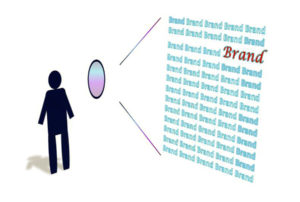Differentiation.
As marketers and business people, we covet product, service, or brand distinction. Why? Because it reduces competition. It allows us to maximize our sales and profit potential. Differentiation is a vital component of any growth strategy.
But how do you know if your brand is truly distinguished in the eyes of your primary consumer target? Well, first you have to identify your primary consumer segment – their attitudes, behaviors, demographics, psychographics, spending, media habits…and that is a whole ‘nother blog subject. But let’s assume you have a pretty good idea of your target segment profile.
I’ve used a very simple approach with some success here. The trick is in not glossing over the answers to this exercise with the simple, obvious answers. But rather, really thinking through and nailing the responses. It goes like this:
For: <enter your consumer segment profile or persona name here>
Who: <are trying to accomplish what?>
What: <your brand, product, service?>
Is a: <is a what? Place? Solution? Resource? Destination?>
That: <does what? Helps how? Solves what problem?>
Unlike: <unlike who? Your competitors?>
Your Brand: <delivers what?>
So after you’ve identified your target segment, it should be a relatively easy step to understand what they are trying to accomplish in the market you compete in. Once you know their need, explain how your product, service, or brand is the best solution to meet your customer’s needs. How does your product or service help solve the customer’s problem?
Next, explain how your solution is different than other solutions available in the market. Yes, …it could be “lower price” if that’s really the arena you compete in, however that’s also usually a race to the bottom. What is the unique, defining characteristic of your offer compared to the competition? What is it about your product that commands a premium that the customer is willing to pay over the competitive offer? It could be product quality, but it could also be the service level. In today’s experience economy, it is likely a combination of factors that roll up to a differentiated overall experience – do you understand what that overall experience is versus your competition?
Finally, against all of the above, what will you deliver?
This is not a super-secret, proprietary process. The trick is in guiding yourself and your enterprise through the tough responses, admitting when you don’t know the answer and aligning on, and committing to finding out. Only then will you be able to develop a well-articulated differentiated value proposition that can be used to develop a positioning statement. Your brand positioning statement is a key component of your brand architecture, which consists of your brand idea, your brand positioning, your brand’s pillars, your brand’s “personality,” and finally your brand equities.
The differentiated value proposition should be a concise statement that resides on the tip of every one of your employees’ tongues. Warning – it’s not a tagline. A tagline would not address each line in our exercise. Taglines and jingles are cool, but it’s the differentiated value proposition that cuts to the core of what you are about. And if it’s on the tip of your customer’s tongues…congratulations. Nirvana.





